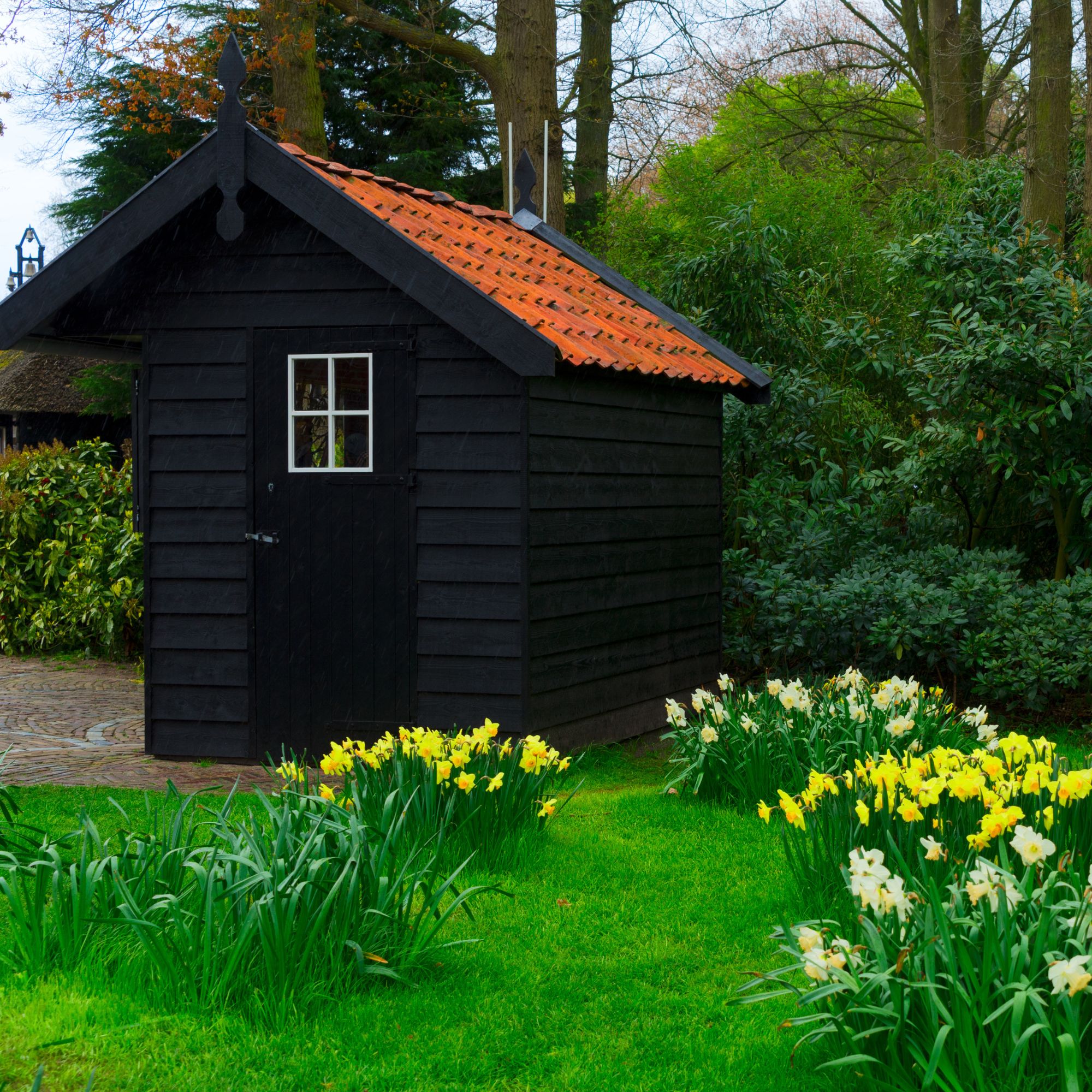
Installing a shed can seem like a daunting process – from establishing a solid base to waterproofing and insulation – with the fear that you will end up with a leaning, leaking pile of timber. Thankfully, our expert guide will talk you through the essentials of putting it in place.
Sheds are the perfect no-nonsense storage solution for garden tools, DIY essentials and seasonal garden items and with plenty of garden shed ideas from which to choose you can easily find the perfect fit for your plot.
Once your shed is up and running make sure you know how to organise a shed to keep it functional and in good condition.
Sheds are an essential part of a gardener's toolkit and a vital part of small garden storage ideas. The secret to successfully learning how to install a shed is in the planning. From choosing the right shed for your needs and available space to preparing a level base and waterproofing, ensuring you've got everything sorted and thought through before you start will make the whole process smoother.
What is the best material for a shed?
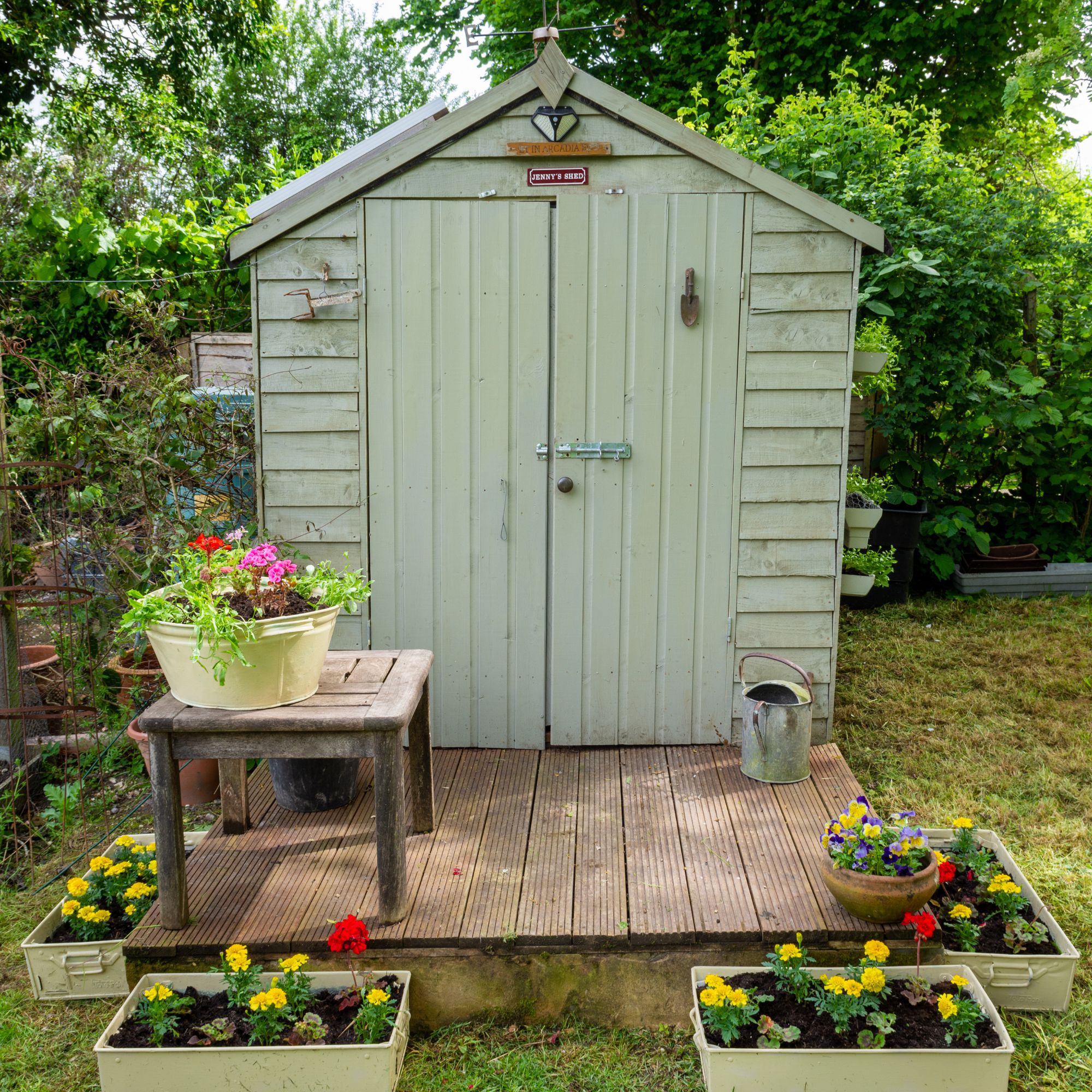
Plastic, metal and wood are the most common materials used for shed construction. Wood is the traditional choice and will provide the most aesthetically pleasing option. It can be painted to help it blend into your garden and can be repainted to maintain its appearance.
Plastic is an affordable option that’s easy to install and low maintenance. ‘Where possible, choose a steel-reinforced plastic shed for added durability,’ advises Samuel Marlow from Garden Buildings Direct.
If your shed is going to be hidden from view and you want a quick-to-install yet durable design, then metal is worth considering. Opt for the best quality you can afford as cheaper models can feel flimsy – the thicker the metal, the more durable it will be. The main risk to a metal shed is rust, so opt for galvanised steel, which is more resistant to rust, paint the shed or apply rust-resistant coatings.
If opting to paint or coat a metal shed, do this as soon as you have installed it in the garden, before rust can set in, as this is easier than applying it after the fact.
Where to buy a shed
When buying a shed it is important to always use a reputable stockist – look for customer testimonials to inform your decision. It is also a good idea to have all the groundwork completed before you order your shed.
This versatile shed measure 8x6m and is contructed from pressure treated tongue and groove boards to ensure durability.
Perfect storing tools in a small garden, this shed has a width of 78cm and a depth of 51.5cm, complete with lockable door and roof hatch.
With two doors, this plastic shed is versatile addition to a garden or allotment. Lightweight and easy to assemble but still strong and stable, it features a vent, window and skylight to ensure good ventilation.
Do I need planning permission for a shed?

If you're wondering whether you need planning permission for a shed you'll be relieved to find out that – for the most part – they don't. Sheds are classed under permitted development, as long as they are ‘incidental to the enjoyment of the dwellinghouse’ rather than used as an external living space.
Where should a garden shed be placed?
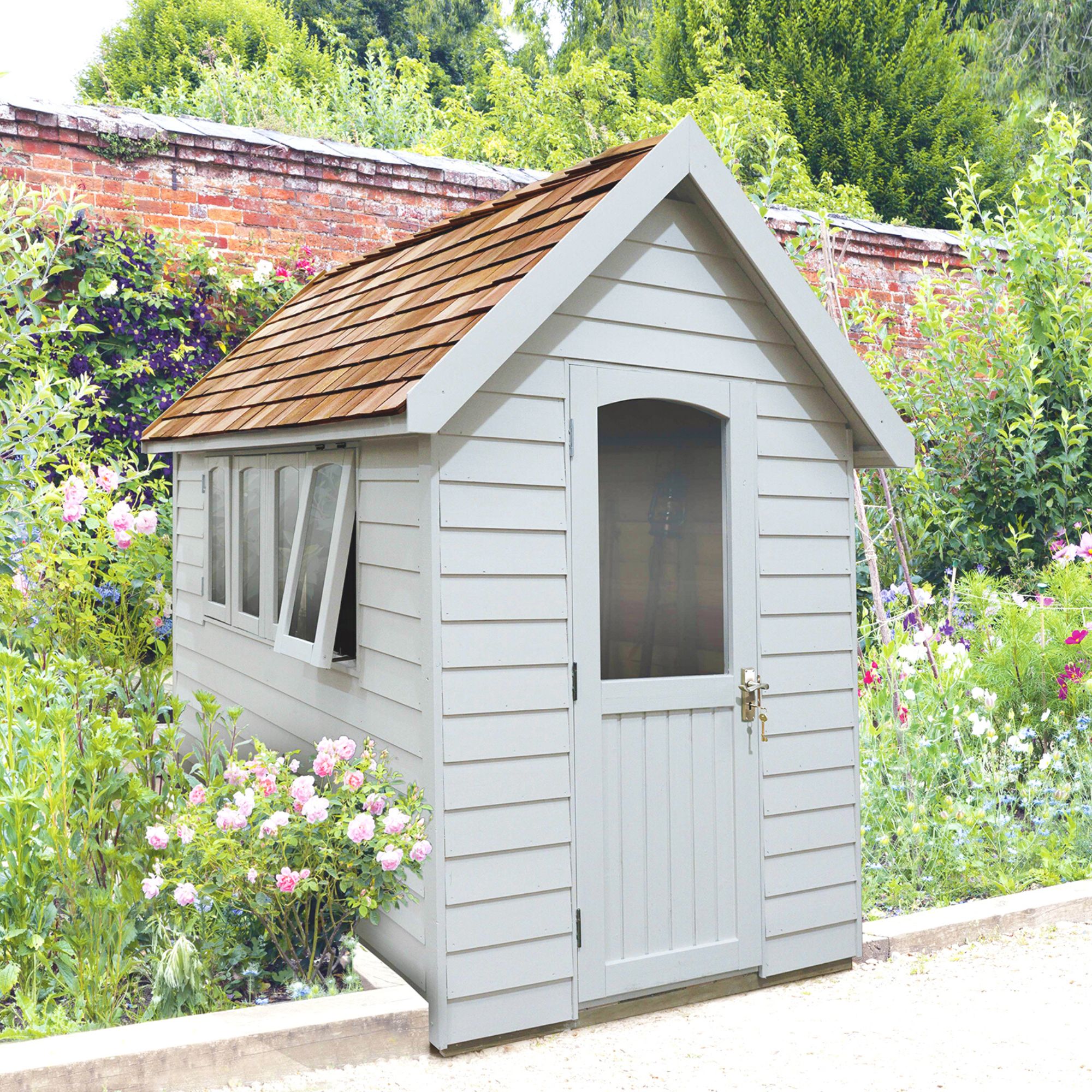
There are two major factors in siting your shed. One is the practicalities and the other is the aesthetics. Depending on the style of your garden, you may want the shed to become part of your garden scheme – or keep it hidden out of sight. Then come the practicalities.
‘You will want to make note of where the door will be positioned and how you will access this from your garden,' advises Jack from Power Sheds. 'Consider overhanging trees coming into contact with the shed and potentially damaging roof felt. You should also consider which way the roof is sloped as this will dictate which way the water runs off.'
Before you install your shed, take a look at your garden after a day of heavy rain. Are there pools of rainwater on the ground? If so, the shed may need lifting on blocks or run-off methods may need to be employed. With a metal or wooden shed, remember that you will need to access all four sides to repaint or re-treat.
The best foundation for a shed
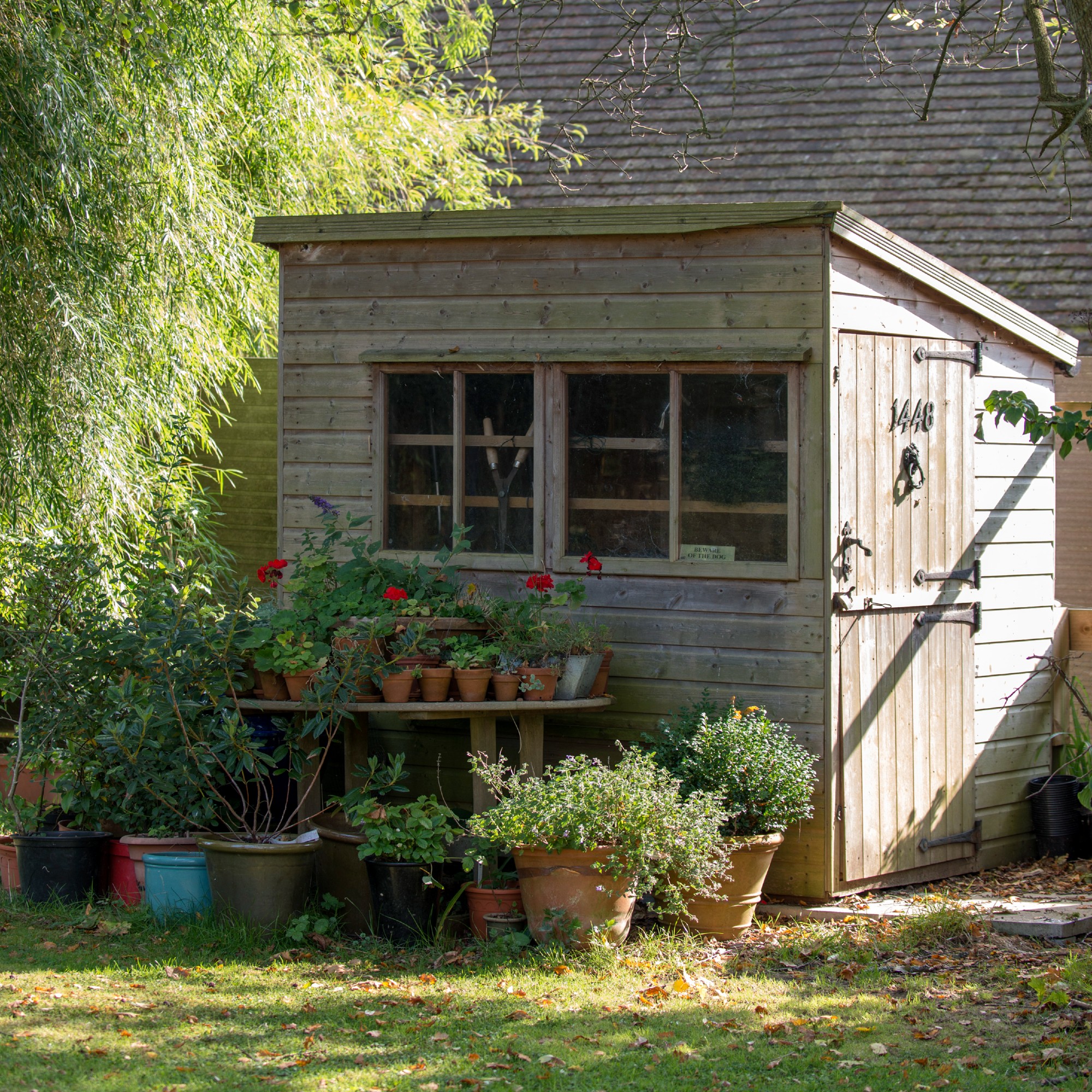
Foundations are the secret to a sturdy shed. Sheds are best placed on a solid base built from either paving slabs or concrete – laying the landscaping at least a metre wider on several sides creates useful working space.
‘It is imperative to check your existing base is level and doesn’t deviate by any more than 15mm from edge to edge,’ explains Jenny Davis of Forest Garden. ‘If this isn’t the case, the building will twist, causing gaps to appear in the sections, and meaning the roof, doors and windows can misalign.'
'To check that your base is level, place a straight-edged piece of timber across the length of the base and put a spirit level on top of the timber near the centre. The bubble in the spirit level should sit comfortably within the two centre lines. Repeat the process across the width of the base. If the base is not level, you must rectify the problem before any installation can begin.’
Typically, there is no need to secure your shed to the base. If your shed has a fitted base, tools and other items stored inside will help to anchor it in place, while heavier metal or wood sheds will have enough weight to stay grounded. However, if you live in a coastal or exposed area that often suffers from extreme winds, it is worth considering anchoring your shed to the base slab with bolts to prevent it from blowing away.
The best shed insulation material
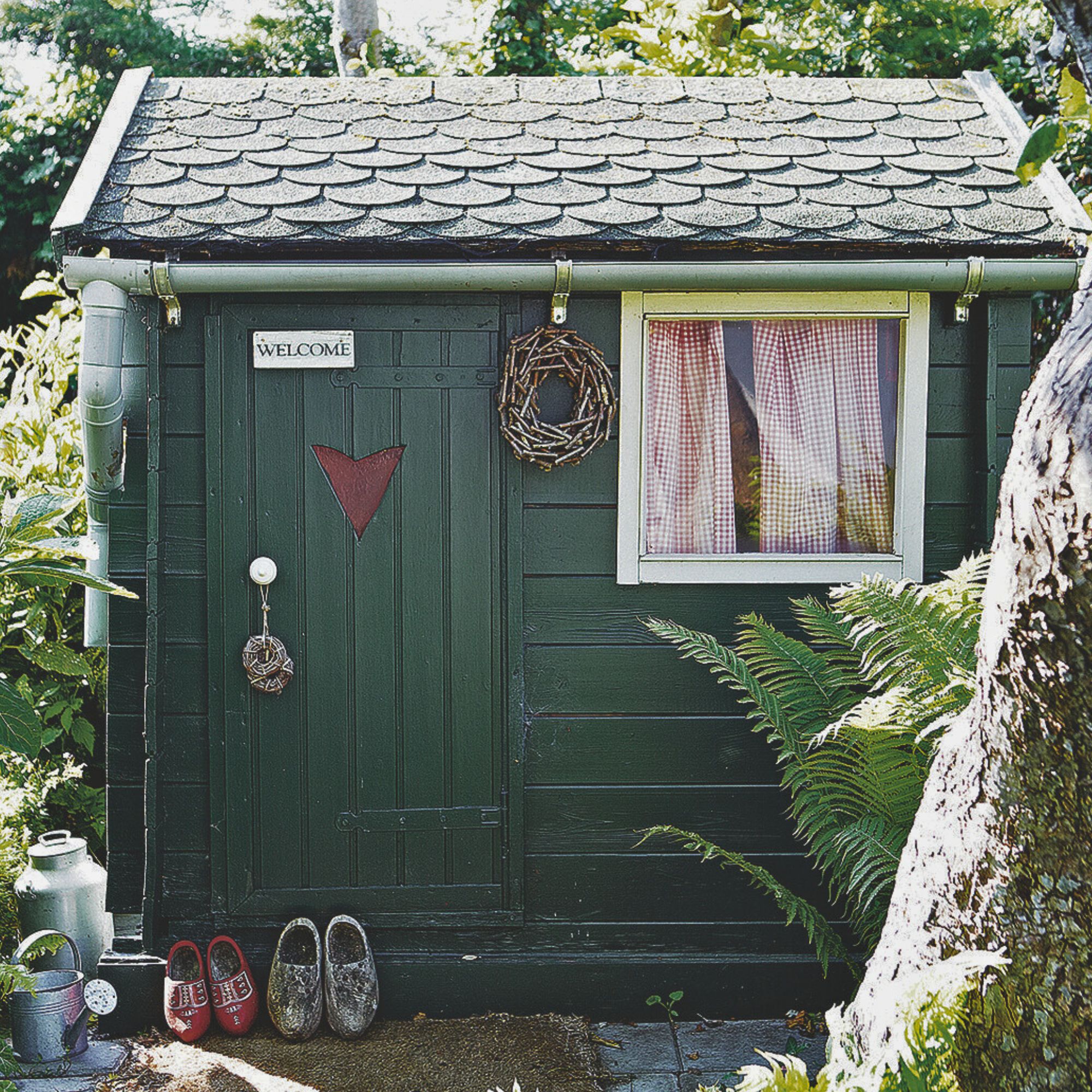
When it comes to keeping a shed warm, good insulation is key. While this sounds like it could be a costly affair, you'll be thrilled to know that there are lots of ways that you can insulate a shed for free.
‘Bubble wrap provides a cost-effective way to insulate a wooden shed; cardboard, too, can provide an effective, short-term solution,' advises Jenny. 'ThermaWrap can be used for any shed type as it’s typically thicker than bubble wrap and is a better insulator.'
'Foam boards are strong, stable and straightforward to install. For the floor, a waterproof membrane is needed, over which anything from carpet to plywood could be used.'
If you are battling damp problems in your shed, upgrading the insulation is also a worthwhile consideration.
The best waterproofing for a shed
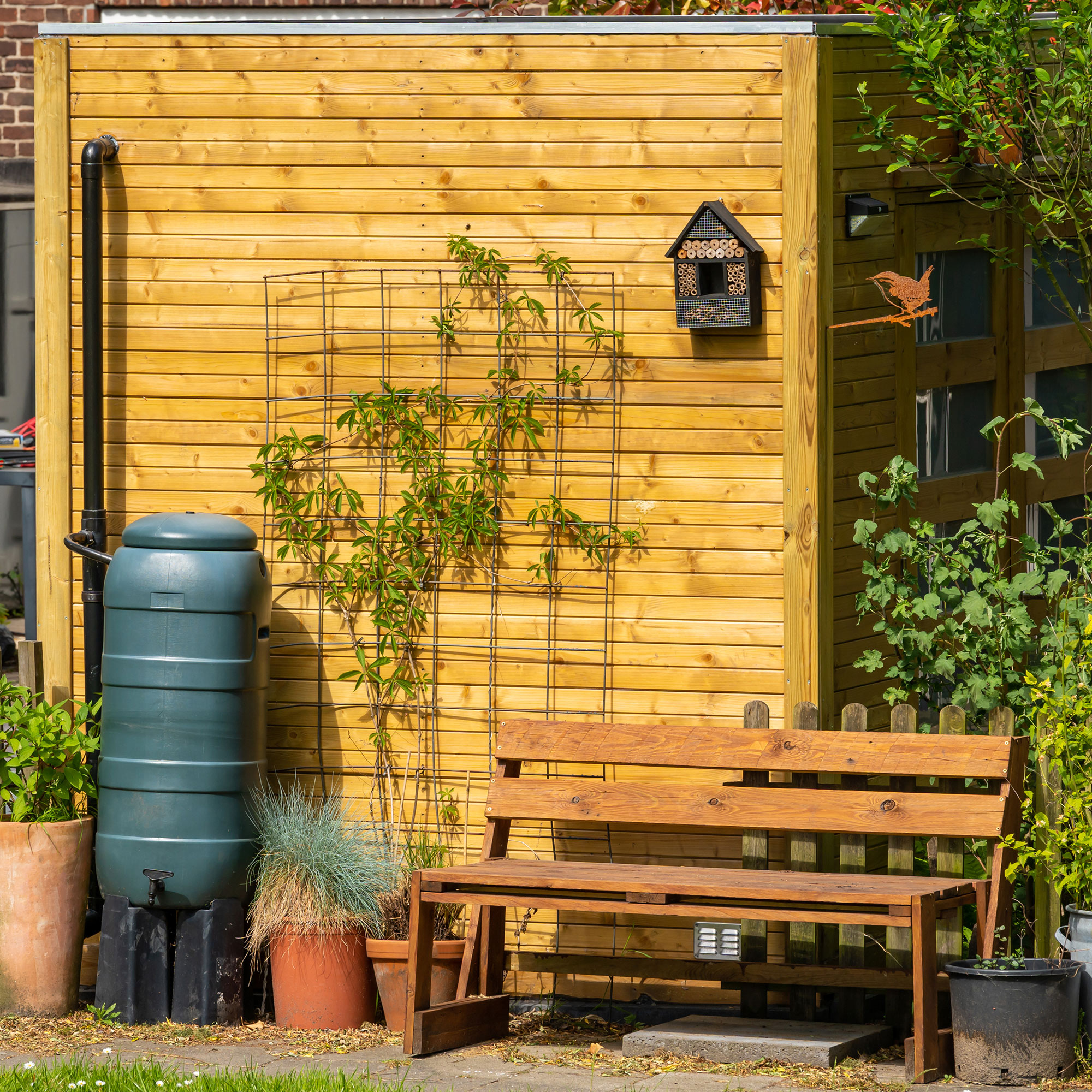
Most newly purchased sheds will be waterproof – be sure to check the manufacturer’s details. ‘Look for dip treated (not just a wash) or Pressure treatment, which ensures sheds are properly protected against rot,’ says Jenny.
- Add silicone to the windows to fill any gaps or prevent water ingress.
- Fill gaps and cracks with filler – wood shrinks, causing cracks to appear around the window and door frames through which water may penetrate. To prevent this from happening, regular checks for gaps are important. If you notice any cracks or gaps, fill them with expanding foam and builder’s caulking. To further protect your doors, fill the gaps with excluder tape. This is a must when getting your garden ready for winter and will also help to stop mice.
- Install gutters and keep them clean. Gutters divert rainwater away from the shed’s foundation and allow water to run down a plastic pipe, minimising its contact with the timber. Install leaf guards to make it easier to keep your gutters clean. These could also be connected to a water butt – helping to save money on your water bills and circumnavigate any hosepipe bans.
- Add siding. Vinyl siding is a great option. It is made using high-quality plastic (PVC) and is available in a wide variety of colours and thicknesses for an affordable price. The material repels water and is highly durable, maintenance-free and easy to install. It’s also resistant to rust and keeps out moisture.
- Stopping the ingress of water is the main way to help reduce any risk of dampness, but increasing ventilation will also help reduce moisture build-up. That could be with a specific vent or just by remembering to open the shed door regularly to let any damp air out.
What is the best colour to paint a shed?
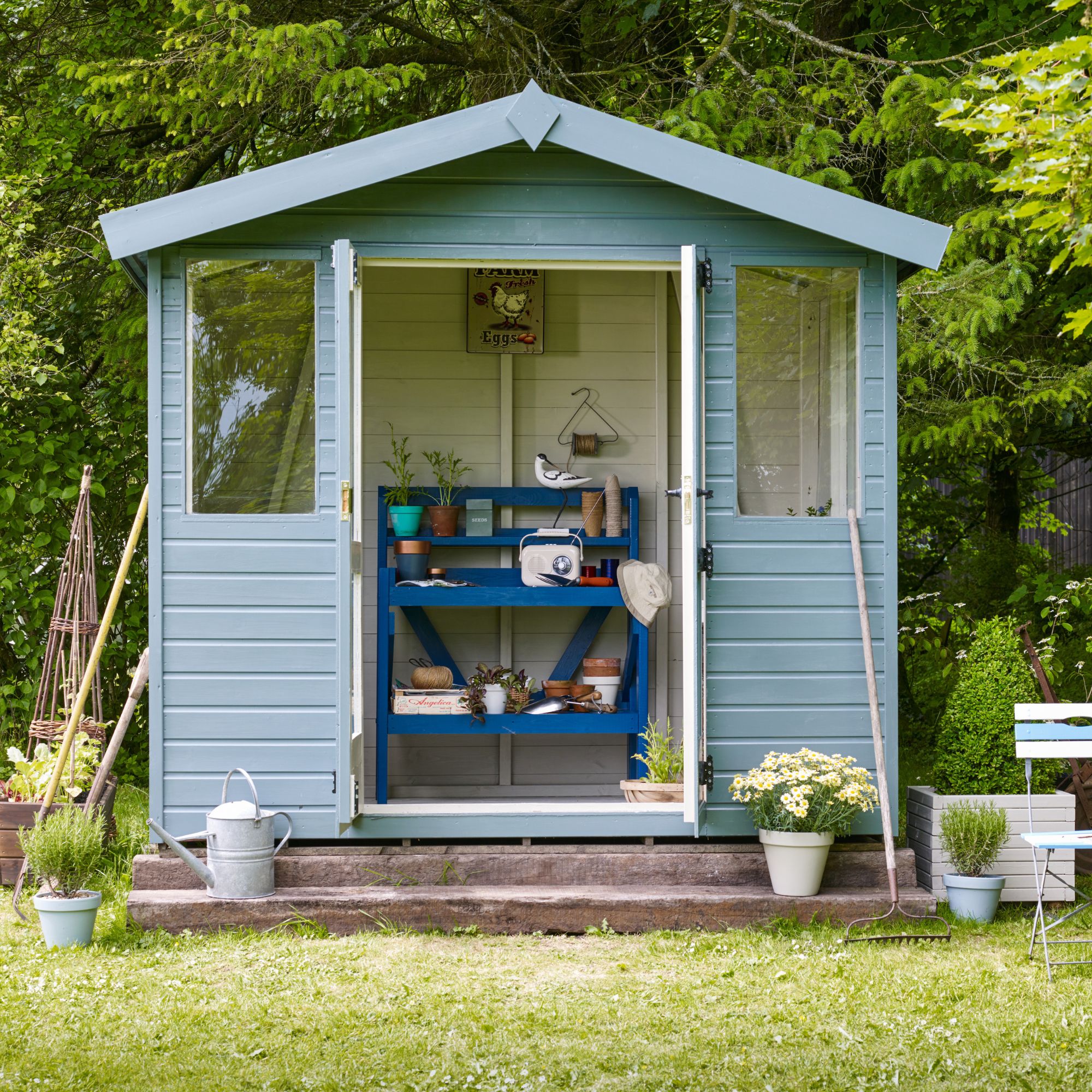
Once your shed is built and fit for purpose, it’s time to integrate it into your garden scheme. If you’ve opted for a wooden design, think about painting it. There are plenty of shed paint ideas from which to choose – neutral green or brown shades will help your shed blend into the background, while a bolder colour will transform it into a standout feature.
‘Whatever colour you choose for your shed, adding intriguing accents is a great way to bring it to life,’ advises Marianne Shillingford, creative director at Cuprinol. ‘A simple way to make a shed shine as a feature is by bordering its windows with a contrasting colour. I love a blue and white combination, but you can go more muted with autumnal shades. Accents can be on the trim of the shed, too.’
For metal sheds or those you would rather keep out of view, consider bordering the area with screening plants that shield it from view. That way you create a functional workspace, that is separate areas of your plot.
FAQs
Can you put up a shed by yourself?
You can definitely put a shed up as a DIY project – even if you've never done it before. However, it might be difficult to install a shed by yourself as you'll appreciate an extra pair of hands to hold panels while they are being screwed into place.
Can you put a shed directly on the ground?
Technically yes you can put a shed directly on the ground but this doesn't mean that you should. 'All garden buildings require a sturdy and level base. This could be a concrete base, paving slab base, timber bearers, or any other suitable base solution which is firm and level,' advises Jack Sutcliffe from Power Sheds.







